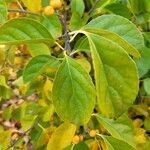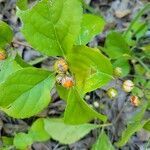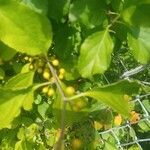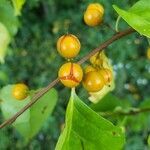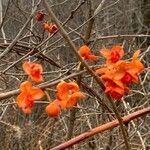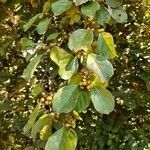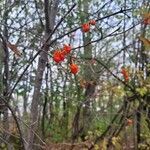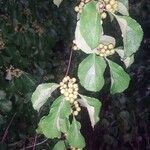A woody vine. It climbs 6 m high. The leaves are 10 cm long. They have teeth along the edge. The leaves are oblong and taper to a point. Male and female plants are separate. The flowers are greenish. The fruit are yellow. They are pea sized and contain scarlet seeds. It only fruits in a continental climate.
Vines to 15 m. Leaves: blade oblong, 5–10 × 2–4 cm, aestivation involute. Inflorescences terminal, panicles, 3–8 cm. Staminate flowers: pollen yellow. Capsules orange, subglobose, 4–8 × 5–9 mm, glabrous. Seeds dark brown, 6 mm. 2n = 46.
